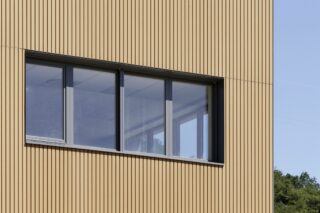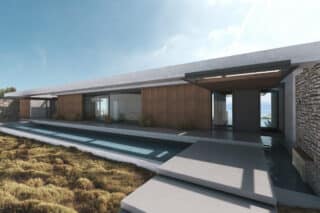Advances in glass technology have some of the world’s most fashionable architects saying goodbye to the four-corner curtain wall towers that formerly epitomized progress. New technologies, notably those used to produce the double curved glass, allow architects to design swirling shapes that seemingly collapse the solid world of structures into liquids frozen in motion.
However, the current techniques used have presented severe problems for buildings such as the Vdara Hotel in Las Vegas (2009) and the ‘Walkie-Talkie building’ in London (2014), both buildings designed by Rafael Viñoly Architects.
Sun reflected off of the London skyscraper, melting automobile parts and damaging nearby shops. Similarly at the hotel, sunlight reflected so intensely that it reportedly melted plastic cups and singed human hair.
A New Process for Glass Facades
The Opus by Omniyat represents Zaha Hadid’s first building design under construction in Dubai. This hotel and apartment complex has more twists and turns than just about any other glass building in the world. The structure is designed as a cube consisting of a reflective flat-paneled glass exterior and a wavy dark blue glass void punched through center that appears to hover over the ground.

“This is a very new process, two years ago, nobody could produce this glass,” says Guillermo Fernandez director of Dubai-based Koltay Facades, which coordinated work on the exterior of the Opus.
The dark blue glass panels used within the void of the Opus are made in China with a new type of machine that puts them through a three-step process. First, they’re heated up to 700 degrees to makes them soft and saggy. A second or two later, the glass is set upon a mold to give it a distinctive shape—each of the thousands of panels used in the Opus’s void is designed to be uniquely sized and shaped. Shortly afterward, the glass panels are introduced into another part of the machine where they are tempered and quenched with air nozzles to strengthen them against breakage.
Updated Technique, Better Results
This new type of double curved glass is designed with very low reflectivity in order to avoid the so-called death rays that a curved façade is otherwise capable of reflecting. According to Fernandez, a poorly designed curved glass façade can lead to rays equaling a 100-square-foot surface being magnified onto a one-square-foot surface nearby.
Often, the exposed part of the glass panel heats up and expands, while the shaded section of the panel remains cooler, breaking the glass if there isn’t sufficient pretension. The double-curved glass of the Opus is designed to be extremely strong, resisting this stress.
The design team used 3-D modeling to ensure the thousands of double curved glass panels making up the Opus’s void would fit. This new technique offers better results, safer for city-goers, and makes possible an awe-inspiring design: the dance of different shaped glass panels.












